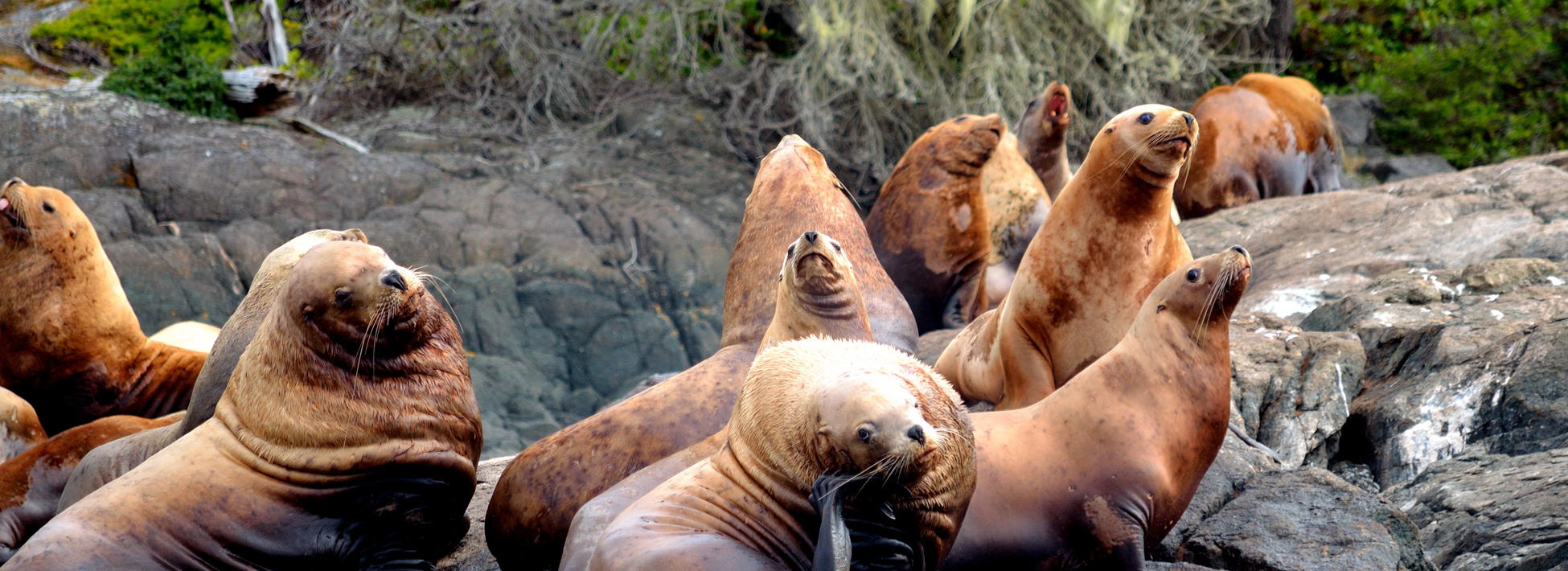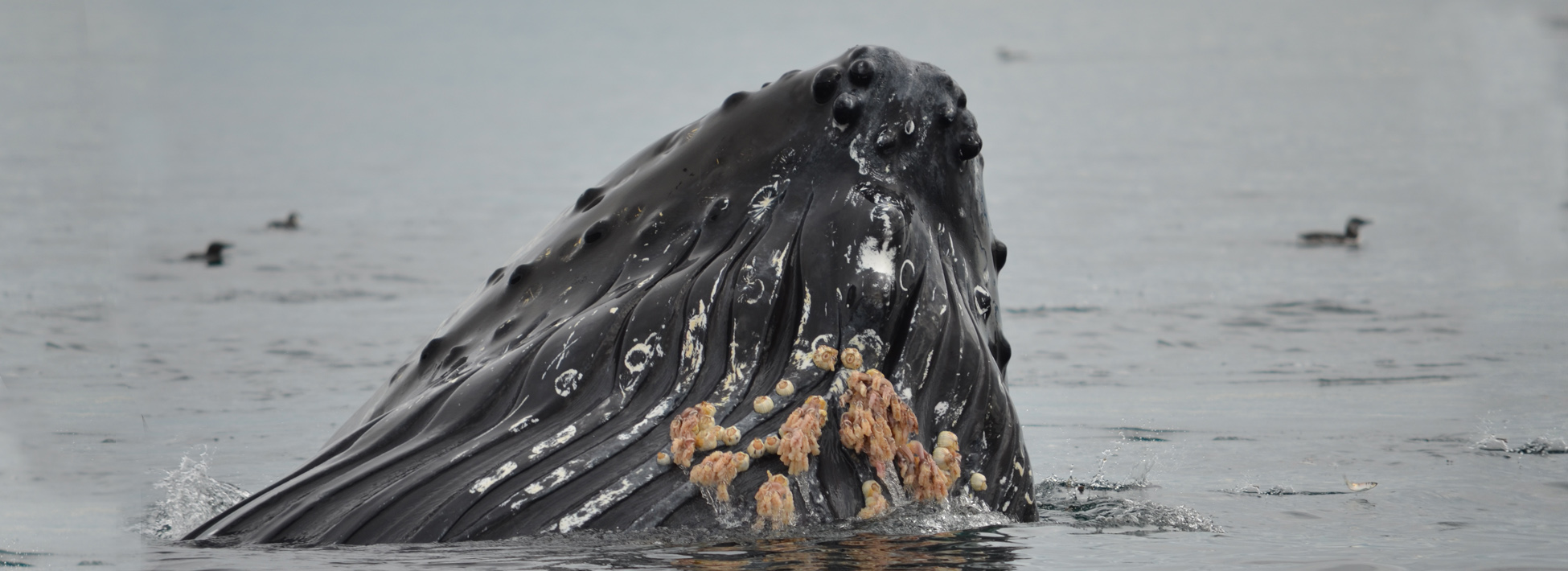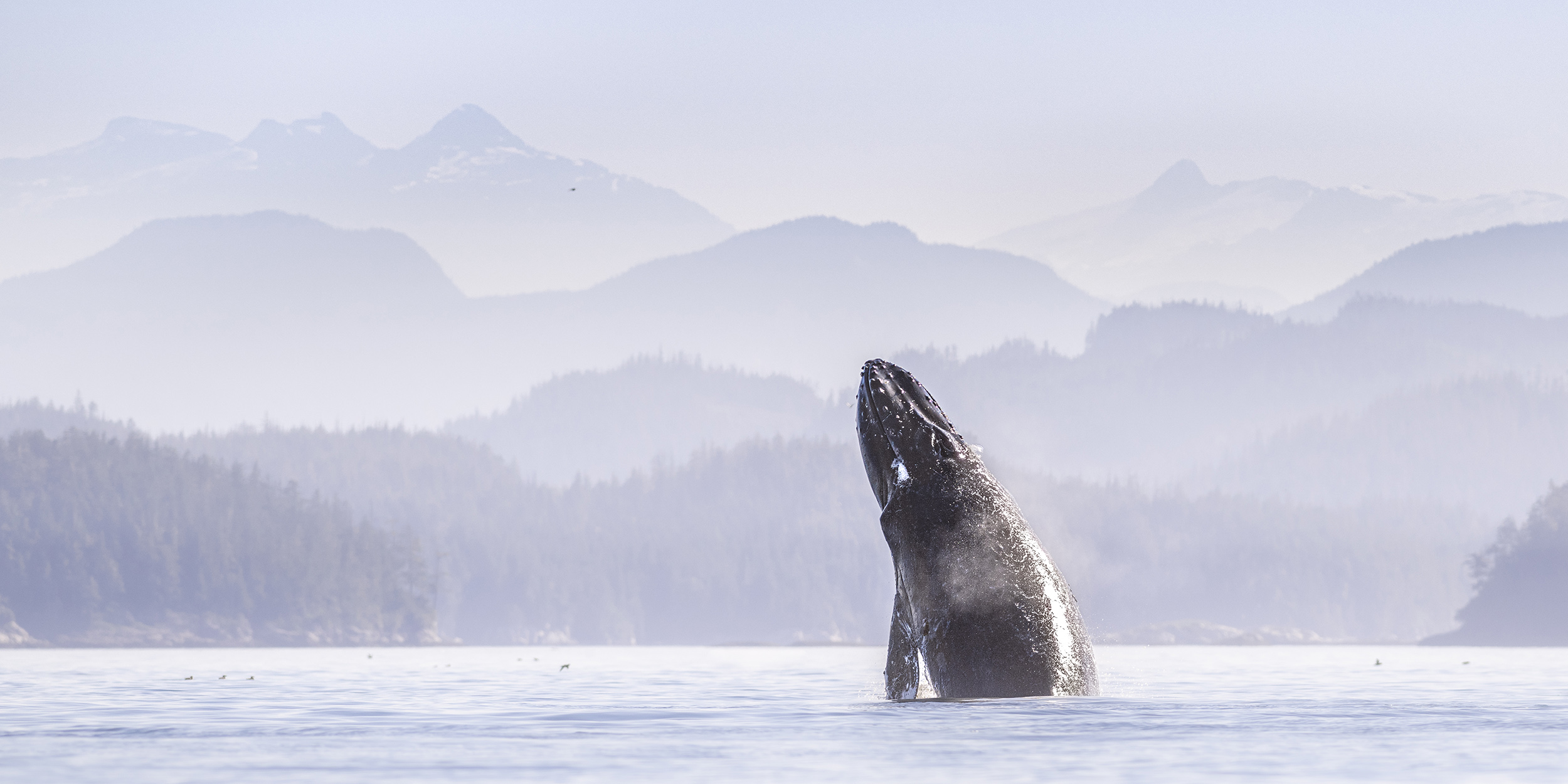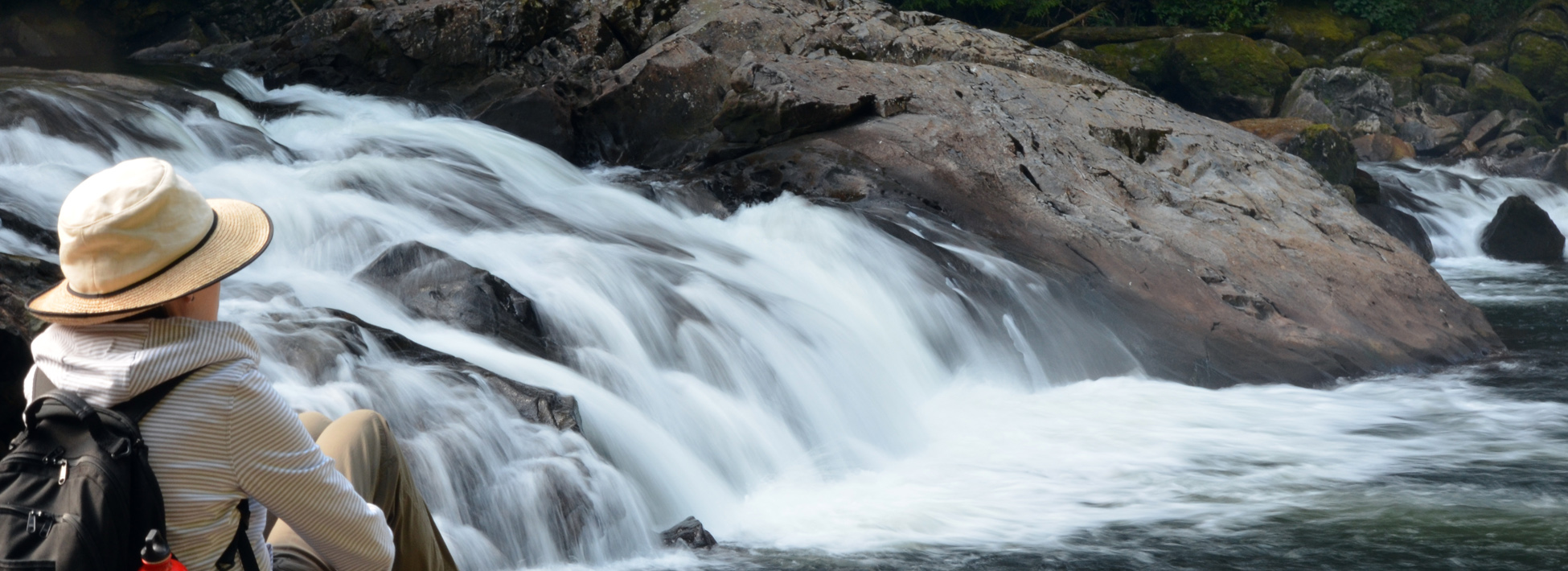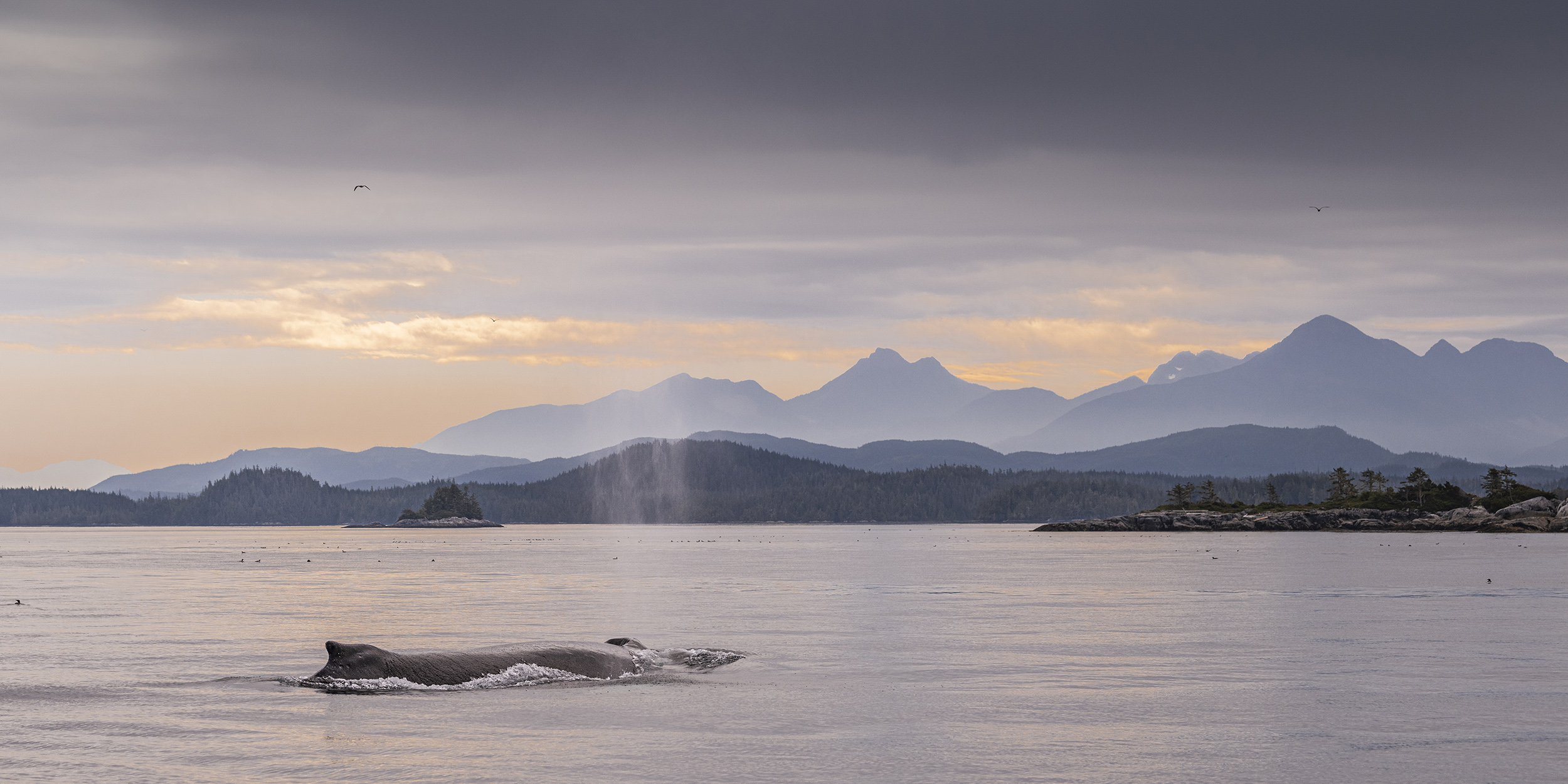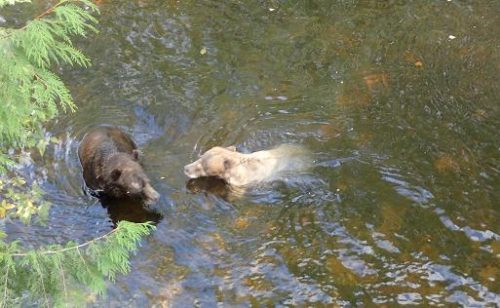 This does not look to exciting until you hear the background story: The dark grizzly was a large male that my guests had named “grumpy”. He came into the viewing area where there was about twelve bears and started to push his weight around and made several juvenile gears move further up the river. The blond bear is a mother with two second year cubs. Lesson – never mess with a mother. She came at the male, this was about ten meters from our cameras, so we could hear her low growl and the clacking of her teeth. The male thought better and moved off and left the other bears to fish. He never left the area but had a much better attitude for the rest of the morning.
This does not look to exciting until you hear the background story: The dark grizzly was a large male that my guests had named “grumpy”. He came into the viewing area where there was about twelve bears and started to push his weight around and made several juvenile gears move further up the river. The blond bear is a mother with two second year cubs. Lesson – never mess with a mother. She came at the male, this was about ten meters from our cameras, so we could hear her low growl and the clacking of her teeth. The male thought better and moved off and left the other bears to fish. He never left the area but had a much better attitude for the rest of the morning.
Bald Eagles

Bald Eagles are frequently sighted in our area. At times they can be seen in large numbers. This is usually where food supplies are high. For example this could be in areas with high concentrations of baitfish or along the rivers in the fall when the salmon are spawning. They are not migratory, but do move around with the food supply. As mentioned earlier when the salmon are spawning we often see many along the rivers, while there will be fewer along the coastline. With little need for camouflage their white head and tail feathers can be spotted easily. The female is slightly larger and her white head extends down a bit farther onto the body, but it is subtle. It takes these birds 4.5 – 5 years to acquire this unique plumage. As juveniles they are a brown colour. With exceptional eyesight and the ability to view 270 degrees they are understandably often seen in high perches and in trees near points and passageways.
Visit our Blog